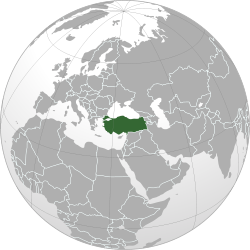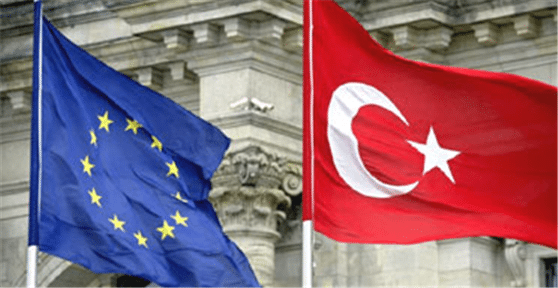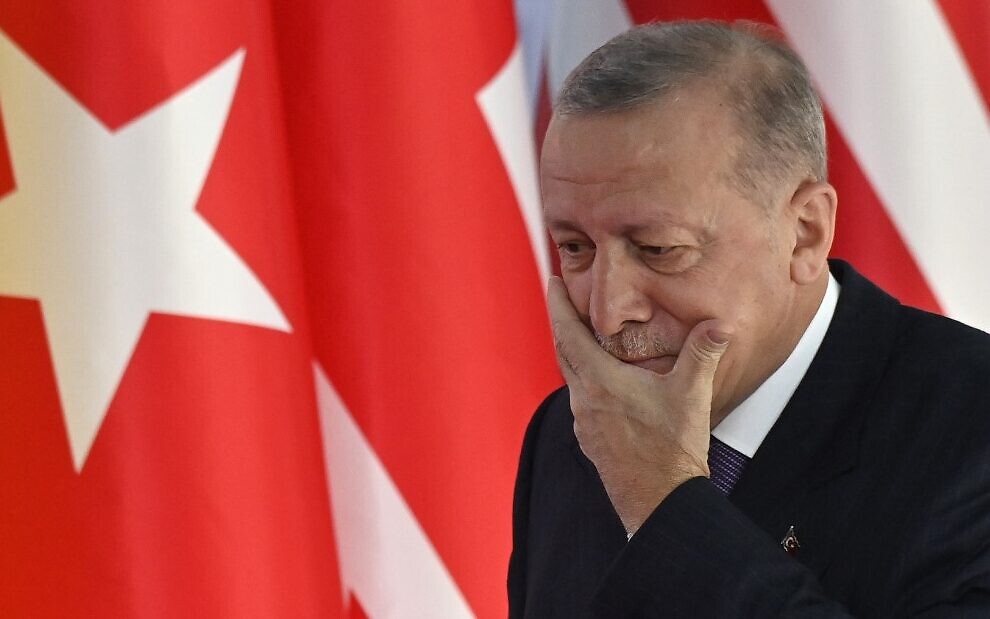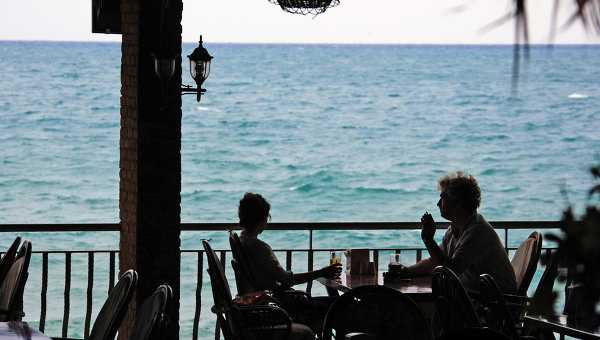By Scott Stewart | June 24, 2010
STRATFOR is currently putting the finishing touches on a detailed assessment of the Islamic State of Iraq (ISI), the al Qaeda-inspired jihadist franchise in that country. As we got deeper into that project, one of the things we noticed was the group’s increasing reliance on criminal activity to fund its operations. In recent months, in addition to kidnappings for ransom and extortion of businessmen — which have been endemic in Iraq for many years — the ISI appears to have become increasingly involved in armed robbery directed against banks, currency exchanges, gold markets and jewelry shops.
This increase in criminal activity highlights how the ISI has fallen on hard times since its heyday in 2006-2007, when it was flush with cash from overseas donors and when its wealth led the apex leadership of al Qaeda in Pakistan to ask its Iraqi franchise for financial assistance. But when considered in a larger context, the ISI’s shift to criminal activity is certainly not surprising and, in fact, follows the pattern of many other ideologically motivated terrorist or insurgent groups that have been forced to resort to crime to support themselves.
The Cost of Doing Business
Whether we are talking about a small urban terrorist cell or a large-scale rural insurgency, it takes money to maintain a militant organization. It costs money to conduct even a rudimentary terrorist attack, and while there are a lot of variables in calculating the costs of a single attack, in order to simplify things, we’ll make a ballpark estimate of not more than $100 for an attack that involves a single operative detonating an improvised explosive device or using a firearm. (It certainly is possible to construct a lethal device for less, and many grassroots plots have cost far more, but we think $100 is a fair general estimate.) While that amount may seem quite modest by Western standards, it is important to remember that in the places where militant groups tend to thrive, like Somalia and Pakistan, the population is very poor. The typical Somali earns approximately $600 a year, and the typical Pakistani living in the Federally Administered Tribal Areas makes around $660. For many individuals living in such areas, the vehicle used in an attack deploying a vehicle-borne improvised explosive device (VBIED) is a luxury that they can never aspire to own for personal use, much less afford to buy only to destroy it in an attack. Indeed, even the $100 it may cost to conduct a basic terrorist attack is far more than they can afford.
To be sure, the expense of an individual terrorist attack can be marginal for a group like the ISI or the Tehrik-i-Taliban Pakistan (TTP). However, for such a group, the expenses required to operate are far more than just the amount required to conduct attacks — whether small roadside bombs or large VBIEDs. Such groups also need to establish and maintain the infrastructure required to operate a militant organization over a long period of time, not just during attacks but also between attacks. Setting up and operating such an infrastructure is far more costly than just paying for individual attacks.
In addition to the purchasing the materials required to conduct specific terrorist attacks, a militant organization also needs to pay wages to its fighters and provide food and lodging. Many also give stipends to the widows and families their fighters leave behind. In addition to the cost of personnel, the organization also needs to purchase safe-houses, modes of transportation (e.g., pickup trucks or motorcycles), communications equipment, weapons, munitions and facilities and equipment for training. If the militant organization hopes to use advanced weapons, like man-portable air defense systems, the costs can go even higher.
There are other costs involved in maintaining a large, professional militant group, such as travel, fraudulent identification documents (or legitimate documents obtained through fraud), payment for intelligence assets to monitor the activities of government forces, and even the direct bribery of security, border and other government officials. In some places, militant groups such as Hezbollah also pay for social services such as health care and education for the local population as a means of establishing and maintaining local support for the cause.
When added together, these various expenses amount to a substantial financial commitment, and operations are even more expensive in an environment where the local population is hostile to the militant organization and the government is persistently trying to cut off the group’s funding. In such an environment, the local people are less willing to provide support to the militants in the way of food, shelter and cash, and the militants are also forced to spend more money on operational security. Information about the government must also be purchased or coerced, and more “hush money” must be paid to keep people from telling the government about militant operations. In an environment where the local population is friendly, they will shelter militants and volunteer information about government forces and will not inform on militants to the government.
Sponsorship
One way to offset the steep cost of operating a large militant organization is by having a state sponsor. Indeed, funding rebel or insurgent groups to cause problems for a rival is an age-old tool of statecraft, and one that was exercised frequently during the Cold War. During that period, the United States worked to counter communist governments around the globe, and the Soviet Union and its partners operated a broad global array of proxy militant groups. In terms of geopolitical struggles, funding proxy groups is far less expensive than engaging in direct warfare in terms of both money and battlefield losses. Using proxies also provides benefits in terms of deniability for both domestic and international purposes.
For the militant group, the addition of a state sponsor can provide an array of modern weaponry and a great deal of useful training. For example, the FIM-92 Stinger missiles that the United States gave to Afghan militants fighting Soviet forces greatly enhanced the militants’ ability to counter the Soviets’ use of air power. The training provided by the Soviet KGB and its allies, the Cuban DGI and the East German Stasi, revolutionized the use of improvised explosive devices in terrorist attacks. Members of the groups these intelligence services trained at camps in Libya, Lebanon and Yemen, such as the German Red Brigades, the Provisional Irish Republican Army (PIRA), the Japanese Red Army and various Palestinian militant groups (among others), all became quite adept at using explosives in terrorist attacks.
The prevalence of Marxist terrorist groups during the Cold War led some observers to believe that the phenomenon of modern terrorism would die with the fall of the Soviet Union. Indeed, many militant groups, from urban Marxist organizations like the Tupac Amaru Revolutionary Movement (MRTA) in Peru to rural based insurgents like the Revolutionary Armed Forces of Colombia (FARC), fell on hard financial times after the fall of the Soviet Union. While some of these groups withered away with their dwindling financial support (like the MRTA), others were more resourceful and found alternative ways to support their movement and continue their operations. The FARC, for example, was able to use its rural power in Colombia to offer protection to narcotics traffickers. In an ironic twist, elements of the United Self-Defense Forces of Colombia, a right-wing death squad set up to defend rich landowners against the FARC, have also gone on to play an important role in the Colombian Norte del Valle cartel and in various “bacrim” smuggling groups. Groups such as the PIRA and its splinters were able to fund themselves through robbery, extortion and “tiger kidnapping”.
In some places, the Marxist revolutionaries sought to keep the ideology of their cause separate from the criminal activities required to fund it following the loss of Soviet support. In the Philippines, for example, the New People’s Army formed what it termed “dirty job intelligence groups,” which were tasked with conducting kidnappings for ransom and robbing banks and armored cars. The groups also participated in a widespread campaign to shake down businesses for extortion payments, which it referred to as “revolutionary taxes.” In Central America, the Salvadoran Farabundo Marti National Liberation Front (FMLN) established a finance and logistics operation based out of Managua, Nicaragua, that conducted a string of kidnappings of wealthy industrialists in places like Mexico and Brazil. By targeting wealthy capitalists, the group sought to cast a Robin Hood-like light on this criminal activity. To further distance itself from the activity, the group used American and Canadian citizens to do much of its pre-operational surveillance and employed hired muscle from disbanded South American Marxist organizations to conduct the kidnappings and guard the hostages. The FMLN’s financial problems helped lead to the peace accords signed in 1992, and the FMLN has since become one of the main political parties in El Salvador. Its candidate, Mauricio Funes, was elected president of El Salvador in 2009.
Beyond the COMINTERN
The fall of the Soviet Union clearly did not end terrorism. Although Marxist militants funded themselves in Colombia, the Philippines and elsewhere through crime, Marxism was not the only flavor of terrorism on the planet. There are all sorts of motivations for terrorism as a militant tactic, from white supremacy to animal rights. But one of the most significant forces that arose in the 1980s as the Soviet Union was falling was militant Islamism. In addition to the ideals of the Iranian Revolution, which led to the creation of Hezbollah and other Iranian-sponsored groups, the Islamist fervor that was used to drum up support for the militants fighting the Soviet invasion of Afghanistan eventually gave birth to al Qaeda and its jihadist spawn.
Although Hezbollah has always been funded by the governments of Iran and Syria, it has also become quite an entrepreneurial organization. Hezbollah has established a fundraising network that stretches across the globe and encompasses both legitimate businesses and criminal enterprises. In terms of its criminal operations, Hezbollah has a well-known presence in the tri-border region of Paraguay, Argentina and Brazil, where the U.S. government estimates it has earned tens of millions of dollars from selling electronic goods, counterfeit luxury items and pirated software, movies and music. It also has an even more profitable network in West Africa that deals in “blood diamonds” from places like Sierra Leone and the Republic of the Congo. Cells in Asia procure and ship much of the counterfeit material sold elsewhere; nodes in North America deal in smuggled cigarettes, baby formula and counterfeit designer goods, among other things. In the United States, Hezbollah also has been involved in smuggling pseudoephedrine and selling counterfeit Viagra, and it has played a significant role in the production and worldwide propagation of counterfeit currencies. The business empire of the Shiite organization also extends into the narcotics trade, and Hezbollah earns large percentages of the estimated $1 billion in drug money flowing each year out of Lebanon’s Bekaa Valley.
On the jihadist side of militant Islamism, jihadist groups have been conducting criminal activity to fund their movement since the 1990s. The jihadist cell that conducted the March 2004 Madrid Train Bombings was self-funded by selling illegal drugs, and jihadists have been involved in a number of criminal schemes ranging from welfare fraud to interstate transportation of stolen property.
In addition, many wealthy Muslims in Saudi Arabia the Persian Gulf states and elsewhere saw the jihadist groups as a way to export their conservative Wahhabi/Salafi strain of Islam, and many considered their gifts to jihadist groups to be their way of satisfying the Muslim religious obligation to give to charity. The governments of Saudi Arabia, Sudan, Yemen, Syria and Pakistan saw jihadism as a foreign policy tool, and in some cases the jihadists were also seen as a tool to be used against domestic rivals. Pakistan was one of the most active countries playing the jihadist card, and it used it to influence its regional neighbors by supporting the growth of the Taliban in Afghanistan as well as Kashmiri militant groups such as the Lashkar-e-Taiba (LeT) for use against its archrival, India.
After 2003, however, when the al Qaeda franchise in Saudi Arabia declared war on the Saudi government (and the oil industry that funds it), sentiment in that country began to change and the donations sent by wealthy Saudis to al Qaeda or al Qaeda-related charities began to decline markedly. By 2006, the al Qaeda core leadership — and the larger jihadist movement — was experiencing significant financial difficulties. Today, with Pakistan also experiencing a backlash from supporting jihadists who have turned against the state, and with the Sunni sheikhs in Iraq turning against the ISI there, funding and sanctuary are becoming increasingly difficult for jihadists to find.
In recent years, the United States and the international community have taken a number of steps to monitor the international transfer of money, track charitable donations and scrutinize charities. These measures have begun to have an effect — not just in the case of the jihadist groups but for all major militant organizations. These systems are not foolproof, and there are still gaps that can be exploited, but overall, the legislation, procedures and tools now in place make financing from abroad much more difficult than it was prior to September 2001.
The Need to Survive
And this brings us where we are today regarding terrorism and funding. While countries like Venezuela and Nicaragua play around with supporting the export of Marxism through Latin America, the funding for Marxist movements in the Western Hemisphere is far below what it was before the fall of the Soviet Union. Indeed, transnational drug cartels and their allied street gangs pose a far greater threat to the stability of countries in the region today.
Groups that cannot find state sponsorship, such as the Movement for the Emancipation of the Niger Delta (MEND) in Nigeria, will be left to fund themselves through ransoms for kidnapped oil workers, selling stolen oil and from protection money. (It is worth noting, however, that MEND also has some powerful patrons inside Nigeria’s political structure.) And groups that still receive state funding, like Iranian proxies Hezbollah and Hamas as well as Shiite militant groups in Iraq and the Persian Gulf region, will continue to get that support. (There are frequent rumors that Iran is supporting jihadist groups in places like Iraq and Afghanistan as a way to cause pain to the United States.)
Overall, state sponsorship of jihadist groups has been declining since supporting countries realized they were being attacked by militant groups of their own creation. Some countries, like Syria and Pakistan, still keep their fingers in the jihadist pie, but as time progresses more countries are coming to see the jihadists as threats rather than useful tools. For the past few years, we have seen groups like al Qaeda in the Islamic Maghreb resort to narcotics smuggling and the kidnapping of foreigners to fund their operations and that trend will likely increase. For one thing, the jump from militant attacks to criminal activity is relatively easy to make. Criminal activity (whether it’s robbing a bank or extorting business owners for “taxes”) requires the same physical force — or at least the threat of physical force — that militant groups perfect over years of carrying out insurgent or terrorist attacks.
While such criminal activity does allow a militant group to survive, it comes with a number of risks. First is the risk that members of the organization could become overly enamored with the criminal activity and the money it brings and abandon the cause — and the austere life of an ideological fighter — to pursue a more lucrative criminal career. (In many cases, they will attempt to retain some ideological facade for recruitment or legitimacy purposes. On the other hand, some jihadist groups believe that criminal activities allow them to emulate the actions of the Prophet Mohammed, who raided the caravans of his enemies to fund his movement and allowed his men to take booty.) Criminal activity can also cause ideological splits between the more pragmatic members of a militant organization and those who believe that criminal behavior tarnishes the image of their cause. And criminal activity can turn the local population against the militants — especially the population being targeted for crimes — while providing law enforcement with opportunities to arrest militant operatives on charges that are in many cases easier to prove than conspiring to conduct terrorist attacks. Lastly, reliance on criminal activity for funding a militant group requires a serious commitment of resources — men and guns — that cannot be allocated to other activities when they are being used to commit crimes.
As efforts to combat terrorism continue, militant leaders will increasingly be forced to choose between abandoning their cause or possibly tarnishing its public image. When faced with such a choice, many militant leaders — like those of the ISI — will follow the examples of groups like the FARC and the PIRA and choose to pursue criminal means to continue their struggle.






